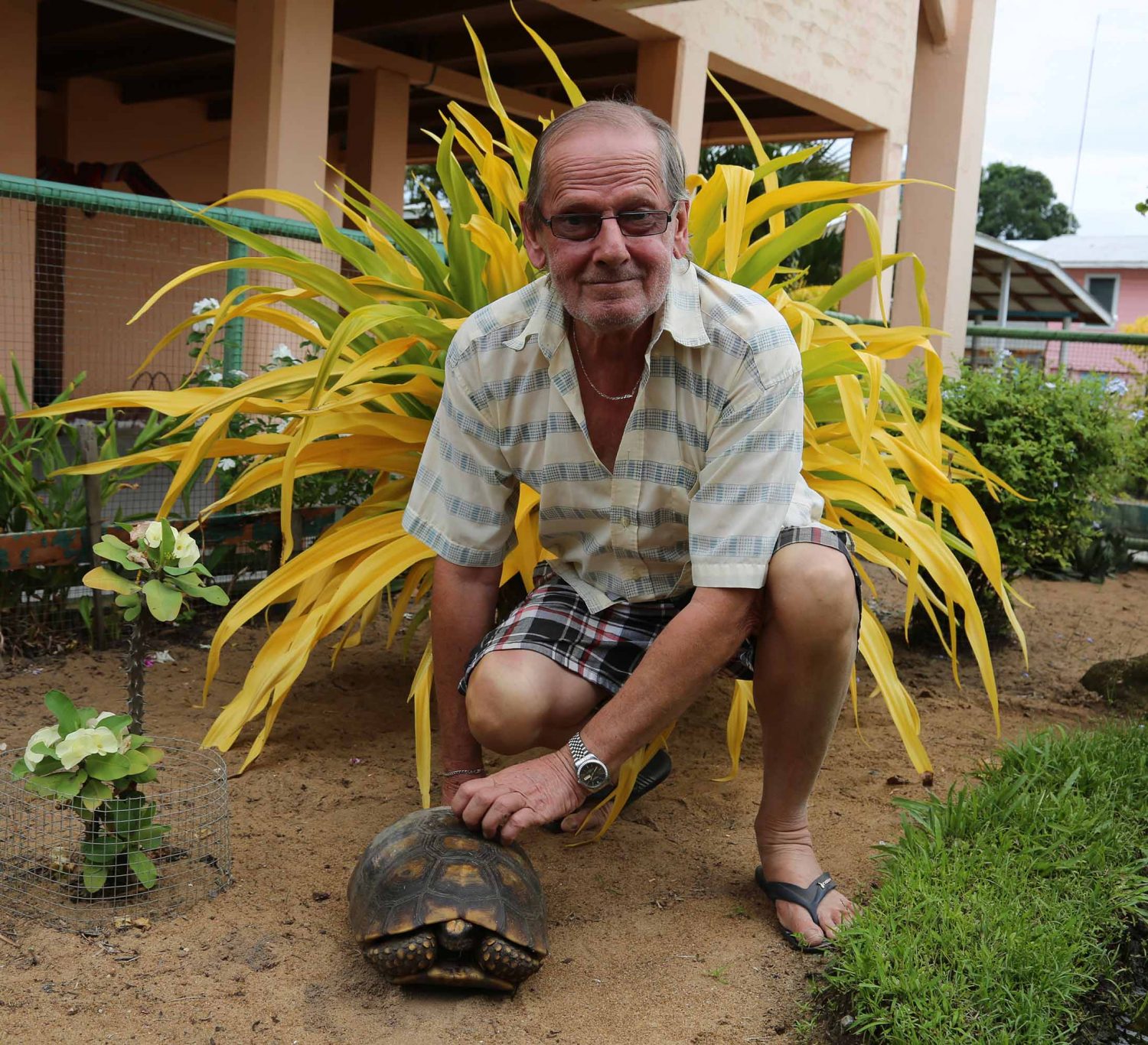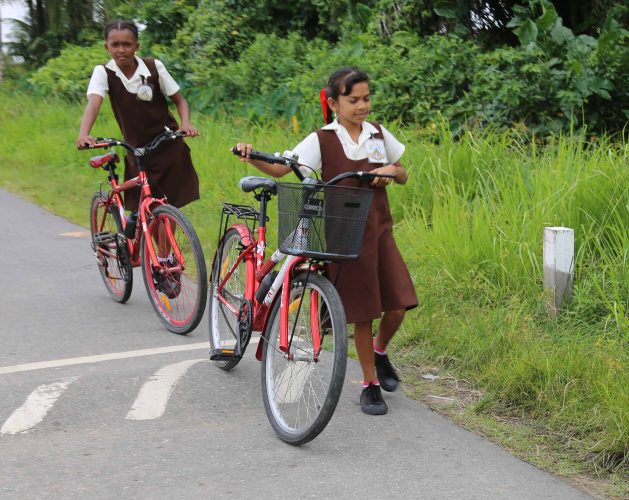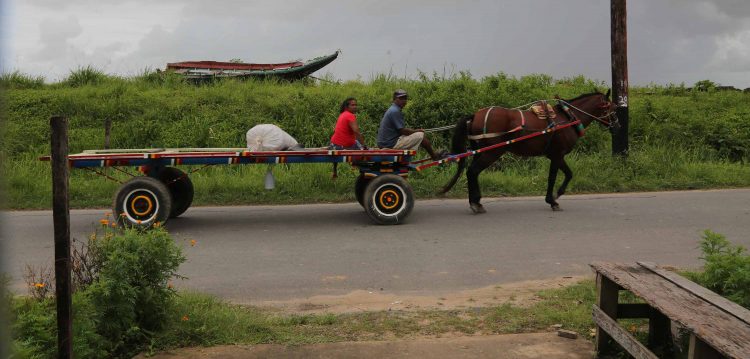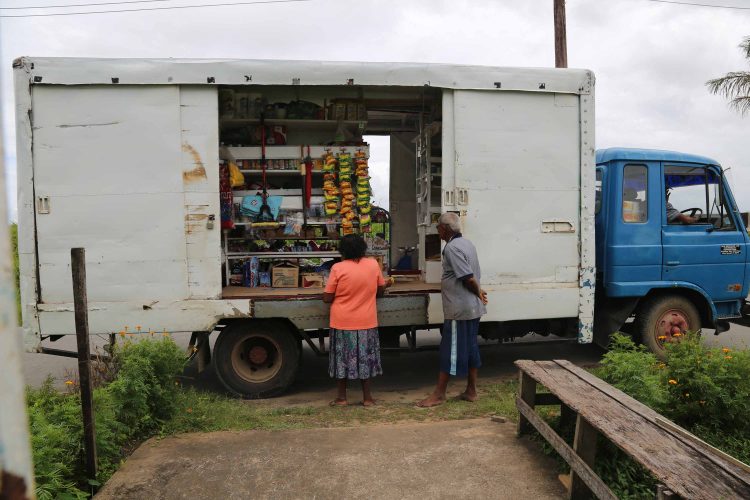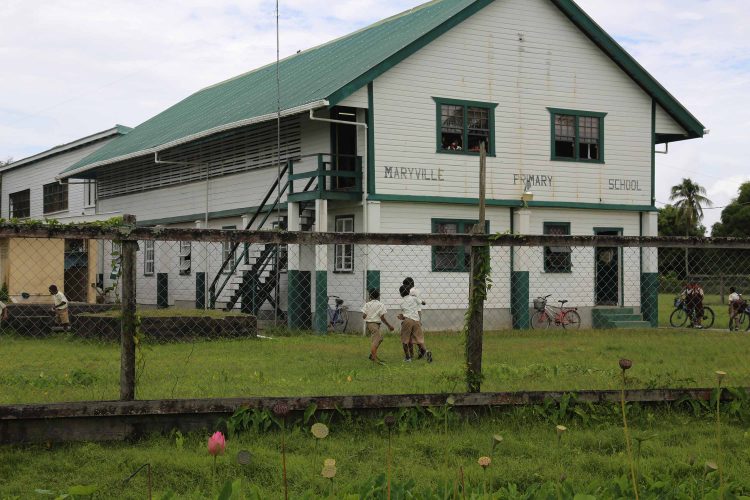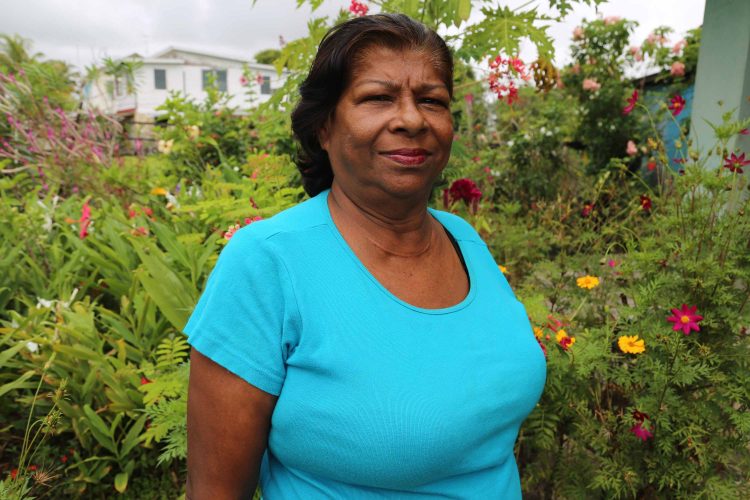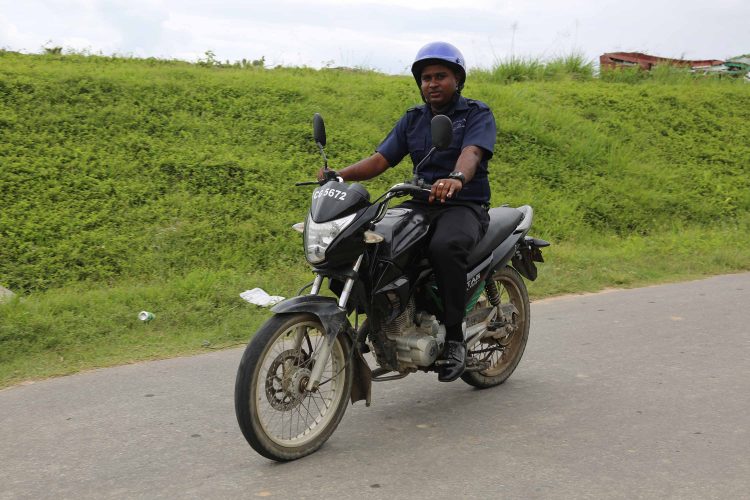Belfield is a tiny village on the western side of Leguan with a small population of some 70 persons, predominantly Indian Guyanese. The cattle rearing/rice farming community is believed to have been in existence since the 19th century and had a larger population decades ago.
The village sits between Maryville and La Bagatelle.
My arrival by speedboat from Parika saw the captain stopping at the Maryville seawall to allow a passenger to offload a washing machine. Since most of the passengers also exited there, I followed suit. Scrambling up the boulders, I got to the top while the boat sped away with its sole passenger to the Leguan Stelling.
Belfield was a short walk away from Maryville. Arriving at the village, the first sight that caught my eyes was children of Maryville Primary playing in the school’s compound. Maryville Primary is situated in Belfield; the building also houses the La Bagatelle Nursery School.
Belfield residents love their flowers; many of the yards are filled with them both at the back and front, some growing almost anywhere including intruding on the parapets while others are neatly planted in rows, kept beyond fences.
One of these yards belong to Nandanie Narine, a retired head mistress of Eastern Leguan Primary and Richmond Hill Primary. She also taught at all of the primary schools on the island.
Narine, who was born in La Bagatelle, had lived a distance from the public road, but years later after learning of a lot near the roadside in Belfield, she seized the opportunity and moved in 1984. Near the Maryville Primary School, is the Charles Ramcharran Presbyterian Church. Both the church and the school she said, were built through the Canadian mission. The government later took over the school, which had produced passes for Queen’s College, St Stanislaus College and other top schools in Georgetown, but today the top students are often sent to Anna Regina Multilateral School.
Belfield also once had a Catholic Church, which over the years dissolved and all that remains is the cemetery where past members lie. Narine worships at the Hindu Temple in Maryville.
“Belfield is very peaceful and quiet. Everybody lives like family and look out for each other. If I’m going out, I’ll just pull my door in and ask my neighbour to look over,” Narine said.
Reflecting on Belfield decades ago she said, “In my days, we had horse-drawn carts, then after that we walked. The big buses came eventually and now the taxis are the mode of transportation.” At this point a horse cart passed by and Narine added that sometimes, they still serve as a mode of transportation. It takes five minutes by taxi from the boat stelling to Belfield but if someone decides to walk, then its 29 minutes, Narine said.
Speaking on development for the village, the woman further said, “I’d like employment for the youths… They have no employment and get themselves caught up in drugs. I would like for us to have a proper ferry service also. We have the flat-bottom boat ( MV Sandaka) which breaks down almost every other day. If the boat works fine, 30 to 45 minutes to get to or from Parika, but when it breaks down, up to two hours.”
It was rumoured that just recently the boat broke down and floated almost to Hog Island. Speedboats went to the passengers’ rescue at a cost of $500 per person.
The retired HM who wants to see youth progress also shared that Blenheim, a nearby village, has a vocational centre which functioned up to last year, but classes have stopped. “I would like to see this up and running again. The youths are frustrated. They have so many passes and no jobs,” she lamented.
Next door lives Hans Buer, a German by birth, who settled in Belfield in 2000. Buer said he loved travelling and every time he took vacation from his job in Germany, he would venture in search of a new country. In 1993, after visiting close to 60 countries, he set out for South America having never visited any country on the continent. Realizing that English was only spoken in Guyana, he came here. Apart from the country’s pristine beauty, Buer met another who stole his heart. They eventually married, and he moved to live with her in Belfield in 2000. Though they are no longer together, Buer stayed on.
“Living here is more quiet and safe. Sometime around 1993, while in Georgetown visiting the Botanical Gardens one Sunday afternoon, three or four teenage boys surrounded me and threatened to kill me if I didn’t give them the camera I had on me,” Buer said. “Since I got here I’ve visited Bartica, Mahdia, Berbice and Lethem. Bartica was a nice place, where you could have walked around late in the nights but it’s not safe anymore. Belfield is the opposite, it’s safe and I find the people friendly.” Although it has been 18 years since Buer settled here, he still has difficulty understanding Guyanese creole.
The 66-year-old man loves to plant; he has put in mainly flowers and some fruit trees. He said that planting a kitchen garden, like some of his neighbours, requires too much work. His daily routine finds him reading the German and Guyana newspapers online before doing a bit of work in his flower garden. He also operates a printing and photocopying business from his home. This benefits not just Belfield but other areas on the island. While I was there a neighbourhood policeman stopped by to have some forms printed out.
Buer said that some of the disadvantages include the high unemployment rate on the island and though there are shops around, not everything is available and thus, many persons would end up having to travel to Parika to shop at one of the supermarkets. The slow Wi-Fi posed another problem.
Currently the island has a plantain factory which was established during the previous administration, but nothing is going on there.
Nalinie (only name given) was born in Wakenaam and moved to Belfield after getting married and later had three children. Today she has four grandchildren who live with her; the two older children have finished school while two younger ones still go to school. Her granddaughter, who wrote the Caribbean Secondary Education Certificate exams last July, has sent out applications for a teaching job but is still waiting.
Some years ago, Nalinie had a stroke and was taken to the hospital but was told there was no medication. Her children took her to the Woodlands Hospital, which she still visits today. She noted that she has come a long way from not being able to speak or walk; today she can do both and manage some light work around the house.
Her husband, a pensioner, helps to make things easier for the family by planting a small kitchen garden. The mobile shops that often pass through make shopping much easier.
Asked what she likes most about Belfield, she said that it would have to be the quietness here.
Umesh Khubrajh has spent all his 54 years in Belfield. The youngest of seven children, he is one of three alive today. He attended Maryville Primary School but having lost his father at nine, he was forced to leave school at third form to join his brothers in the backdam.
Yet backdam days were fun sometimes. Khubrajh recalled that when the bulls were pulling the slide that pulled the straw into the carry-on, he would sit on top enjoying the ride. Of course, some of these days were cooled down by swims taken in the nearby canals.
What he likes most about the village is the quiet and the sea breeze blowing in.
His grandfather who came from India, settled in Belfield after indentureship.
